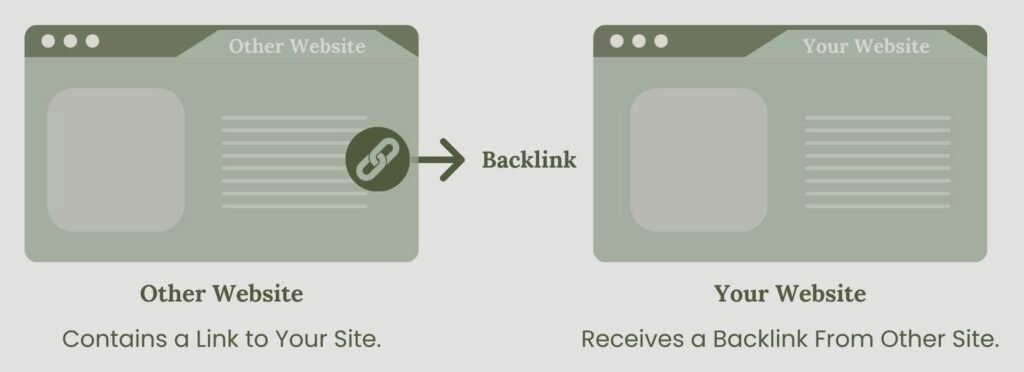So, you’ve got a website, but traffic is not flowing in like you hoped, huh? Don’t worry, you’re not alone. Just having a website won’t cut it. Getting a grip on the different types of SEO can be your ticket to boosting your site’s visibility. Plus, once you understand what’s what, you’ll be better equipped to tackle the problems head-on before calling in the cavalry. Let’s get started!
What are different types of SEO?
Let’s talk about the three different types of SEO:
- On-page SEO: This is all about tweaking your website content to boost your rankings. Think using the right keywords to match what people are searching for.
- Off-page SEO: Here, it’s about actions taken outside your website to climb up the ranks, like getting other reputable sites to link back to yours.
- Technical SEO: This is where the technical magic happens, focusing on things like speeding up your site to improve user experience.
Now, let’s unpack each of these types of SEO a bit further.
On-Page SEO
Let’s talk about the different types of SEO, starting with on-page SEO. This aspect specifically focuses on the content within your website. Basically, if you want your site to show up on search engines and attract visitors, you need content that’s easy to find and understand. Google, in particular, loves content that is helpful.
What’s on your site matters big time. Here’s what on-page SEO involves:
- Title tag: Think of it like a mini version of your page title, but on Google. Keep it snappy (under 60 characters) and make sure to sneak in your main keyword, secondary keyword, and your brand name.
- Meta description: This is like your webpage’s summary. Short and sweet (160 characters or less), it tells folks what they’ll find and nudges them to click. Sprinkle in your keyword, a synonym, or related terms for good measure.
- Images: Pictures speak volumes, right? Make sure yours are saying the right things by optimizing titles, file names, captions, and alt text for humans first, SEO second. Toss in keywords where they fit and stick to Google’s image rules.
- URL structure: Keep it clean and simple. Ditch those long strings of numbers or dates. Instead, use dashes to separate your page title and any keywords.
- Internal linking: Think of these as your site’s secret passageways. They help search engines navigate and understand your pages better. Plus, they keep visitors clicking around, which Google loves. Use your keyword as anchor text, not just a generic “click here.”
- Content: Ah, the heart and soul of SEO. Write stuff that’s top-notch, original, and tailor-made for search. Stick your keyword in early on, toss it into a header, and sprinkle variations throughout. It’s all about giving Google what it wants – and keeping your readers happy too.
Off-Page SEO
Off-page SEO is basically everything that’s happening outside your website but can still impact how it ranks in search results. One big part of it? Snagging those high-quality backlinks.

Here’s a neat example to wrap your head around it: Say you write a killer article about cat allergies on your site. Another website finds it super helpful and mentions it in their own study about pet allergies, linking back to your site. That link? That’s your backlink, and it’s like a little boost for your SEO. Search engines like Google love these, especially when they come from trustworthy sites.
But off-page SEO isn’t just about backlinks. It’s also about:
- Backlinks: These are like digital thumbs-ups from reputable sites. When they link to your content, it tells search engines your site is trustworthy. But remember, building a solid backlink profile takes time and effort.
- Online reviews: They’re gold for your online presence. Encourage happy customers to leave feedback on platforms like Google Business Profile and other relevant review sites. Positive reviews not only boost your credibility but also signal to search engines that your business is worth showing off.
- Brand signals: When people search for your brand or engage with your social media, it tells search engines you’re legit. So, focus on boosting brand awareness and staying active on social platforms to enhance your off-page SEO game.
Remember, if your website feels like a ghost town, it might be time to up your off-page SEO game.
Technical SEO
SEO is all about what’s going on behind the scenes of your website. We’re talking about things like making sure search engines can easily crawl your site, ensuring users have a smooth experience, and keeping your site speedy.
When your site loads slowly or has broken elements, it’s not just frustrating for users; it’s also bad for SEO. That’s why technical SEO is crucial. It’s about fixing those issues and making sure everything runs smoothly.
Here are some key aspects of technical SEO:
- Checking out your site from a technical angle to see what’s up
- Finding and sorting out any duplicate content issues
- Giving Google a heads-up on how to explore your site with a robots.txt file
- Making sure your site map is crystal clear
- Optimizing your code and file sizes to make sure your pages load lightning-fast
- Keeping an eye on your crawl budget
- If you’re moving your site, handling that transition smoothly
- And of course, making sure your site looks just as good on mobile devices as it does on a desktop.
The goal of technical SEO is to make your site user-friendly and search engine-friendly. If humans can’t navigate your site easily, neither can search engines. So, things like having a clear site structure are essential for both users and SEO.
Other Different Types of SEO
Beyond the main types of SEO categories, there are numerous other strategies to boost your search engine visibility. Let’s explore a few additional methods that may not fit neatly into the standard categories.
Image SEO
You know how your website’s content needs to be optimized for search engines, right? Well, that includes your images too!
Image SEO is not just about pretty pictures; it’s about ensuring your images are optimized for search engines. When you optimize their HTML tags, you’re boosting your chances of showing up in Google’s SERPs.
Thinking about how your pictures can grab attention on SERPs? That’s where Image SEO kicks in. It is not just about pretty pictures; it’s about making sure your images are optimized for search engines. Imagine you’re searching for ‘best coffee shops in town,’ and boom, there’s a mouth-watering latte pic from your café right at the top. That’s the power of Image SEO.
Even Google’s John Mueller advises tweaking your image filenames for better visibility. He also recommends filling out alt text as well ( it not only helps in case the image fails to load but also aids those with visual impairments) Oh, and don’t forget to keep the surrounding text relevant.
Video SEO
Video SEO is all about making your videos shine in search results. When we say Video SEO, we’re talking about tweaking different parts of your video to boost its visibility. This includes things like:
- The Title
- The URL
- Tags
- Description
But wait, there’s more! You can take it a step further by adding structured data to your website’s code. This helps search engines like Google understand what your video is all about.
Let’s say you’ve got a video about dog grooming. Using key moments, you can highlight important clips like a pro groomer’s quick tips. This not only helps searchers find what they need fast but also tells Google what the crucial parts of your video are.
All these video SEO tricks can give your YouTube videos a boost, making them stand out in their own little corner of the SEO world. Just imagine how showing off your dog grooming skills can fetch you a loyal following in the pet care community.
Ecommerce SEO
Wondering how e-commerce SEO can revolutionize your online store’s traffic without breaking the bank? Unlike paid search, where costs can soar, investing in e-commerce SEO is a smart move. Why? Because it elevates your website’s ranking whenever potential customers hunt for products or services.
Appearing in search engine results pages (SERPs) is non-negotiable. Without visibility, you risk losing out on valuable customers. But here’s the kicker: with savvy competitor research, focused homepage SEO, and strategic website architecture, e-commerce SEO can work wonders for your traffic and search volumes.
Online businesses selling products or services can’t afford to ignore e-commerce SEO. It’s the secret sauce for driving more traffic and boosting sales. But here’s the thing: optimizing your site isn’t just about optimizing product titles and descriptions. It’s about mastering platforms like Etsy or Amazon too.
In a fiercely competitive e-commerce landscape, top-notch SEO is your ticket to success. Don’t just compete; dominate the online shopping scene with stellar SEO strategies.
Mobile SEO
Did you know that over 85.68% of people worldwide own a smartphone? It’s a staggering number! To thrive in today’s digital landscape, it’s crucial for brands to ensure their websites are mobile-friendly. That’s where mobile SEO comes into play.
Mobile SEO isn’t just about having a responsive design; it’s about making sure your site is optimized for smooth and efficient navigation on mobile devices. This involves technical SEO, where you fine-tune your website’s code to ensure fast loading times and seamless user experience on smartphones.
Moreover, mobile SEO also involves understanding the unique keywords that mobile users search for. These keywords might differ from desktop searches, so it’s essential to conduct mobile-specific keyword research to target your audience effectively.
In essence, mobile SEO is all about maximizing your website’s visibility and usability on mobile devices, which is indispensable in today’s smartphone-dominated world.
Local SEO
Local SEO is a game-changer for businesses with physical locations. It is your ticket to boosting foot traffic. It’s all about fine-tuning your website and popping up on platforms like Google Business Profile (or Google My Business for the old school folks) to catch the eye of your local people.
Let’s keep it real with a scenario: Picture yourself in Orlando, desperately needing a dog groomer. When you hit up Google, the top results? Yup, those are the ones acing the local SEO game.
So, if you’re that dog grooming spot in Orlando, you gotta up your local SEO game to snag a prime spot on that Google search page.
What exactly does local SEO entail? Well, it’s a mix of managing citations online, setting up that Google Business Profile, nailing local keywords, crafting site content that screams ‘local,’ and networking like a boss to score those sweet partnerships and backlinks.
But hey, don’t forget about the basic types of SEO: on-page, off-page, and technical SEO are still crucial. The local SEO goodies we just talked about? They’re the cherry on top, elevating your local rankings while you nail those SEO fundamentals.
Want to explore unconventional strategies for local SEO? Check out our previous blog post to discover innovative ways to enhance your local presence: Unconventional Local SEO Strategies: Thinking Outside the Map Pin.
How To Figure Which SEO Service You Need?
Here are a few handy checkpoints to help you pinpoint which types of SEO services are the perfect fit for you:
- Start with an SEO Audit: This means taking a good, hard look at how your current SEO game is performing.
- Define Your Goals: It’s all about setting your goals. What do you want to achieve with your SEO efforts? Get crystal clear on your objectives.
- Know Your Audience: Now, let’s get cozy with your audience. Who are they, and what are they searching for? Understanding their needs is key.
- Assess Your Competitors:Time to spy on the competition. Take a peek at what they’re up to in the SEO realm. It’s all fair game in the quest for optimization.
Lastly, cherry-pick the right SEO services for you. Consider your audit, goals, audience, and competition, then handpick the services that align perfectly with what you need to achieve.
Final Word
So, we’ve just hit you with a heap of info, right? But start by figuring out which of the different types of SEO your site might be lacking. A nifty way to kick off is by running a Site Audit. Once you’ve got a grip on that, dive into what services and tasks could boost each area.
Here’s a quick rundown:
- Got an old site bogged down by tech issues? Time to dive into technical SEO.
- Got a shiny new site but lacking content? Content marketing’s your buddy.
- Got awesome content but nobody’s seeing it? Optimize that off-page SEO.
- Need to target a local audience? Cue local SEO.
The more you get clued up on these types of SEO services, the smoother sailing it’ll be to collaborate with someone (or tackle it solo) and rev up your online visibility. Ready to boost your site’s performance? Let The Margator do the hard work for you and let’s turbocharge your SEO game together!

